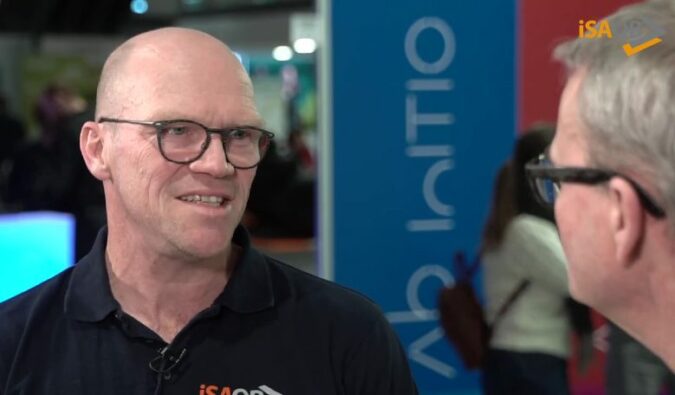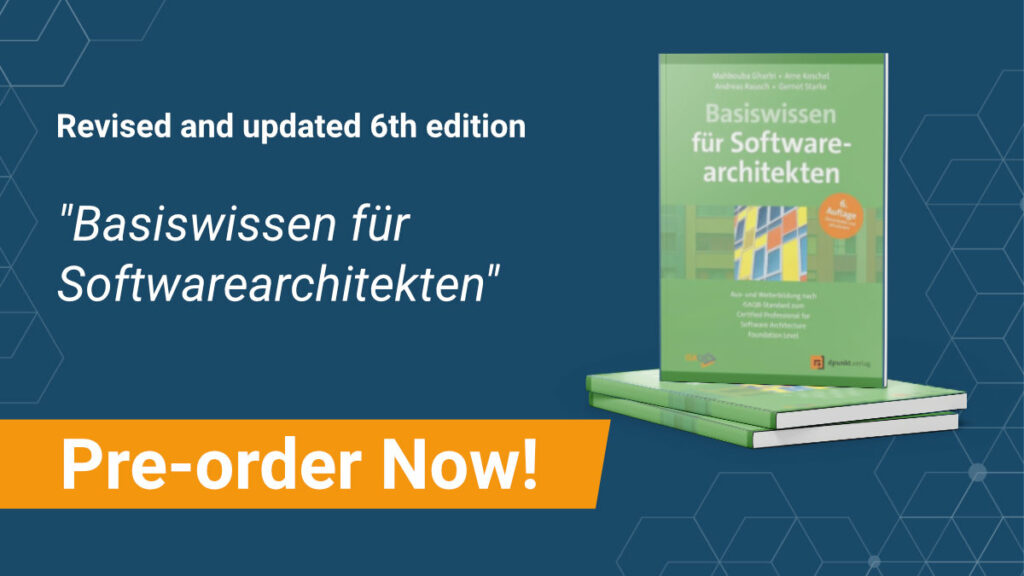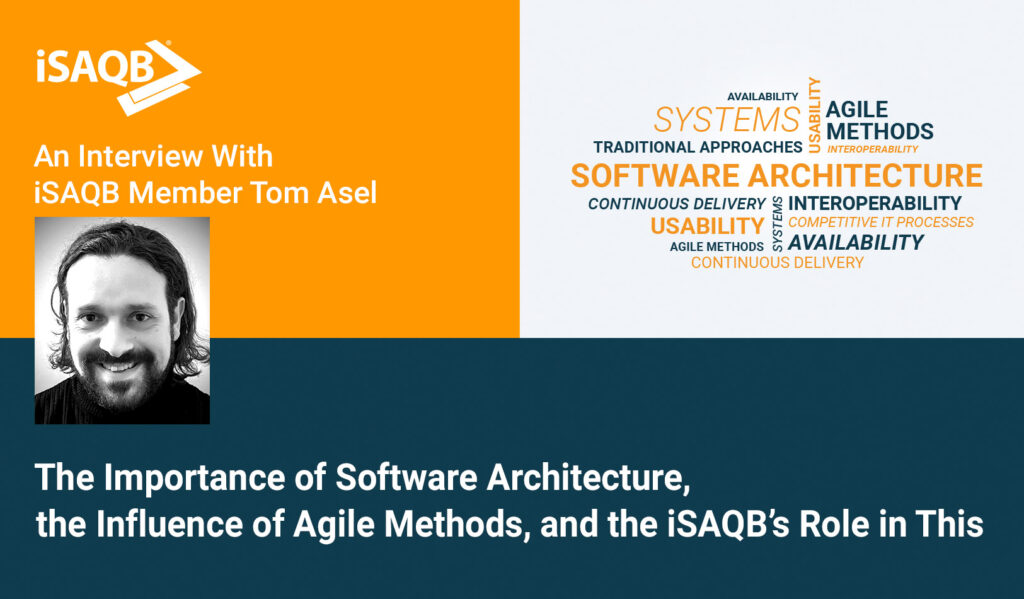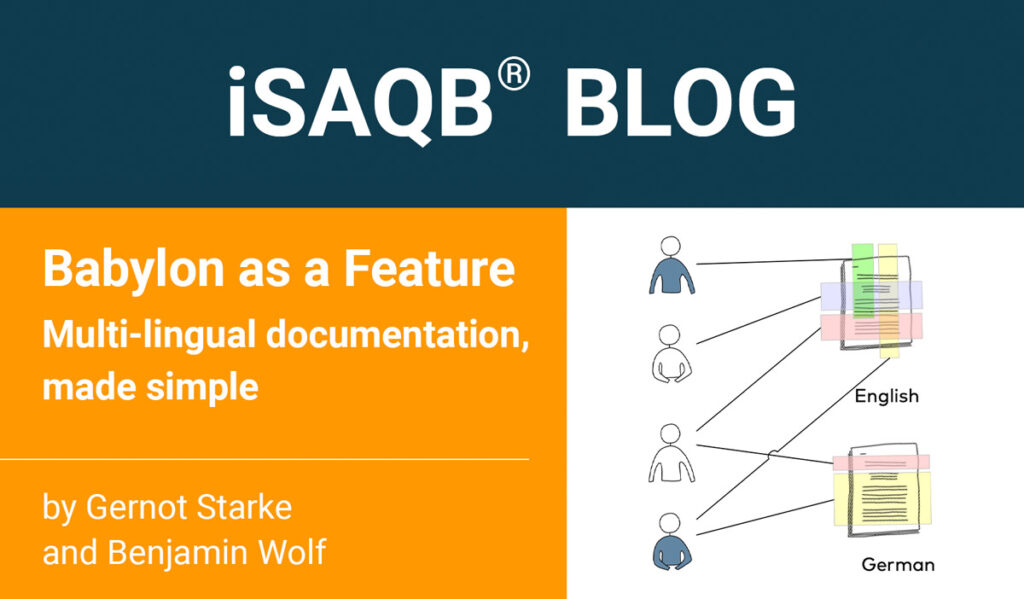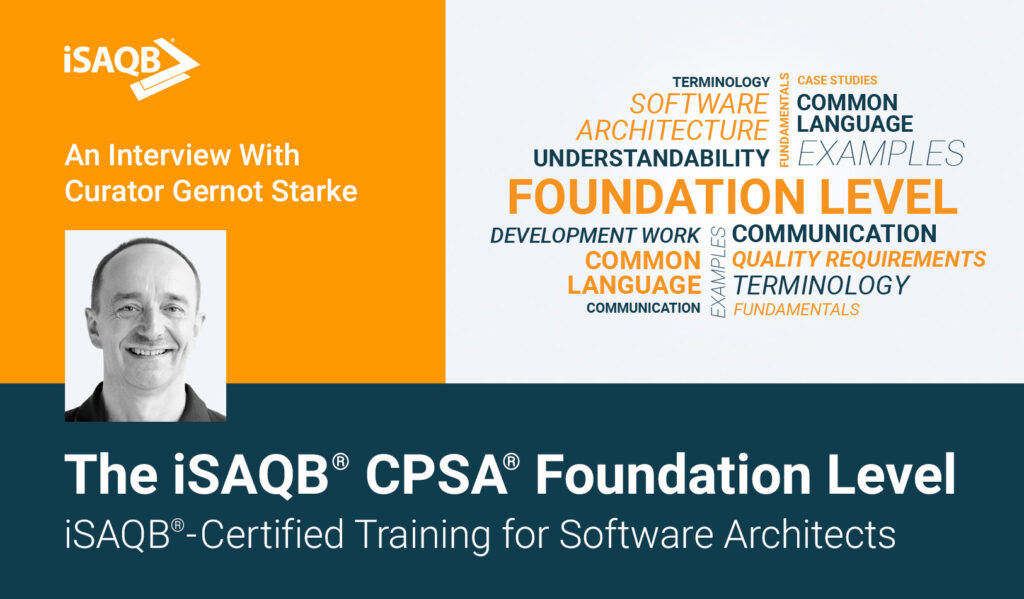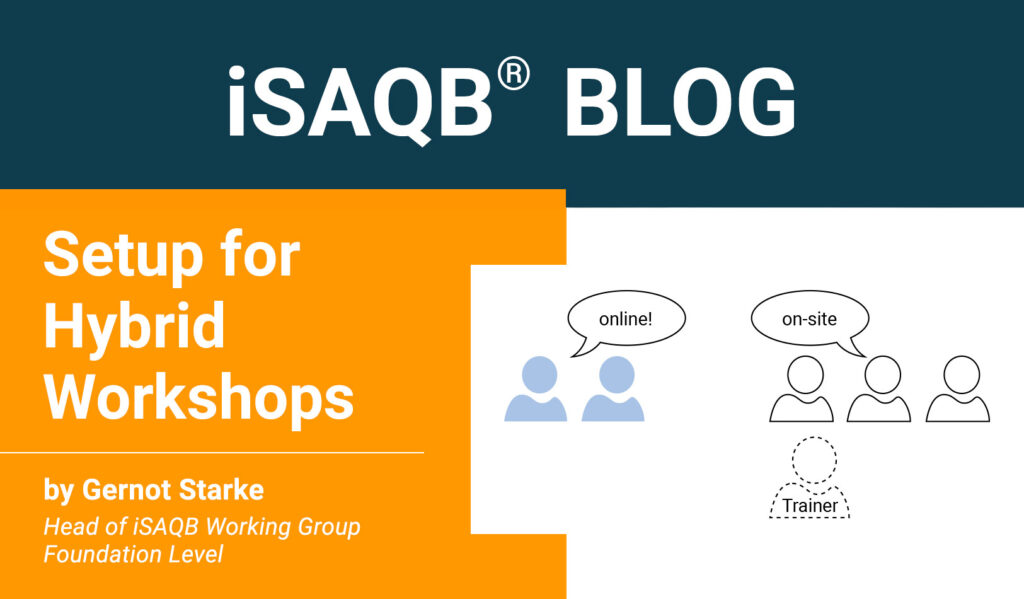Software Architects in Changing Times
Interview with iSAQB member Mischa Soujon at the OOP conference 2020 in Munich
Christoph Witte: Hello, my name is Christoph Witte. I’m a freelance journalist. I’m here in front of the booth of the International Software Architecture Qualification Board at the OOP conference in Munich. And I want to talk to Mischa Soujon. He’s working at IBM as a solution architect, making prototypes, and proof of concept for clients from the public area. He’s working at the IBM Watson Center in Munich. If you know what the Watson Center is you also know that it is at the forefront of technology. It’s working with IoT, artificial intelligence, and, how IBM calls it, augmented intelligence.
Mischa, what is your role at the iSAQB?
Mischa Soujon: Hello. My role at the iSAQB is member of the working group Foundation Level. We, the colleagues in this working group, built the curriculum for the Foundation Level, so that the trainers and training providers know how to set up the trainings. And we create and review the questions for certification at Foundation Level. We manage all these things around the certification for the Foundation Level.
Christoph Witte: And Foundation Level means these are the basic courses or groundwork courses? Or what kind of courses are at Foundation Level?
Mischa Soujon: The Foundation Level training provides information and helps the attendees or trainees to learn the basics, what any software architect needs to know. They learn the ground of technologies, the ground of methodologies and software architecture used in their daily work. They get some hints and tips on how to communicate with others in the team, with the business side and the technology side. They learn a lot of things they need to do their daily job. It also provides a common understanding of IT and software architecture in general nearly all around the world, so that we all use the same words, and the same meanings, and talk in the same language when we are talking about components, systems, system views, system context etc.
Christoph Witte: Why should architects go to these courses? Because I think architects are very well trained at university, and in their jobs. Why should they do this additional training?
Mischa Soujon: My experience is that software architects who come from an automotive company, for example, and software architects who come from an insurance company or different areas and branches – they have a good understanding of technology and architecture in their areas, but they have to communicate with other architects, with other software developers from other areas, because they have to exchange the information or the experience they have. And to do this really fast and efficiently they have to have a common language and a common understanding of the basic things. That’s the reason why I really think that it is very helpful to have this basic language. A basic understanding and knowledge of basic architecture, software architecture.
Christoph Witte: You’re working at the Watson Center. And, as I said, the Watson Center is at the forefront of modern computing technology. Working with artificial intelligence, IoT, augmented reality. And, last but not least, the Watson technology we all know from the quiz Jeopardy, and other topics. How does your work as an architect differ because of the new technologies you work with?
Mischa Soujon: The most important influence here is that in early IT history we worked at one simple place, and now we have some cloud technologies, and developments are much faster than ten or twenty years ago. So, as an architect I have to adapt these new technologies to my old knowledge, and bring the new technologies to the, let’s say old data centers of our clients, to the old-fashioned systems they have, and we can’t switch from one day to the next. We have to understand how the old stuff is set up, how the old things are working, how these legacy systems, so-called legacy systems, are working, and how we can transform them or move them, transition them, to the new technologies if necessary. Sometimes it is not necessary, but this also means finding a software architect or IT architect who can understand and see it. Sometimes legacy systems are very fine, and you don’t have to do anything. But if you don’t have this experience you can’t see this, and you need this experience. This is also sometimes part of the exchange between architects – to know and to understand what has to be changed, where to adapt the new technologies, and what could remain stable for the next five to ten years.
Christoph Witte: But with new technologies, work is different in the groups. The methods are different. Agile is conquering the world at the moment. What we heard today in the keynote speech is that there is no real need for architects in agile teams. How do you comment on that?
Mischa Soujon: Yes, the agile methodologies like Scrum and such, or self-organized teams which are working together and build their systems, their small services – I will not say microservices, but small services – without a dedicated role of an architect, but they build architectures. And if you have a team with experienced developers only, you probably have no one who has an overview of the situation, and takes a look at the edge of the corners, and at the interfaces between other systems. And if you don’t have someone with experience in architecture, someone who is an architect and knows this stuff, then sometimes it is messed up. My own experience at IBM, for example, is that if we do some proof of concept or some prototyping for a client, and we do this with people who are not that experienced, they build something which works very fine for a demo for three months, and then the team leaves or splits up and goes away, and the demo breaks. Then it is much more difficult to find the components to repair this or just set it up anew. If you haven’t built an architecture and documented this architecture. The role of an architect is not the one and only to decide everything, but he or she is the one who gets things together, how to document them, and how to name them, so that others can understand what’s happening. So, this is the main role of an architect nowadays, and this is the change from the early days when the waterfall methodology was the norm.
Christoph Witte: How do you reckon do new technologies come into trainings? How do they become topics in new trainings? Is there a process or is that just by chance?
Mischa Soujon: To be honest, it is just by chance. But since the trainers mostly are experienced architects, so-called senior architects, or advanced certified architects, they know that they have to learn every day. They grab the new technologies. They learn by themselves, and they adapt these new technologies, the new methodologies, to the old ones they have learned. And they try to find explanations on how to transform old things to new things or on what the differences are. And this partly goes back into the curriculum. But we are talking about Foundation, about the basics, and they don’t change as quickly. But the knowledge of the architects, who are oftentimes the trainers, gets into these trainings, and sometimes we adapt the curriculum. Mostly once or twice a year currently, but we focus on changing the curriculum once a year, so that it is mostly stable. But it will be reflected by the architect themselves.
Christoph Witte: Okay, thank you very much for this talk, Mischa.
And thank you for your time and interest. And please keep in mind – software architects will stay, but maybe they will be named differently in the future. Thank you very much.
Watch the full interview here:
Share this article:
Related Posts
About the Author
Featured in this article


